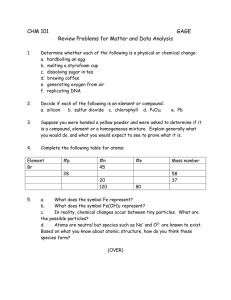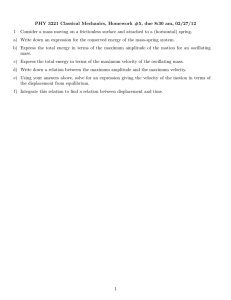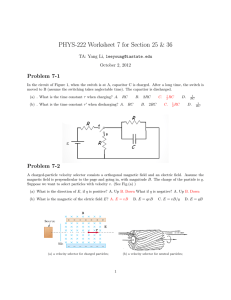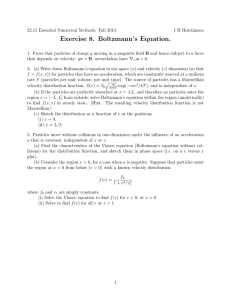Introduction to Plasma Physics I 22.611j, 8.613l, 6.651j I.H. Hutchinson 10 Sep 03
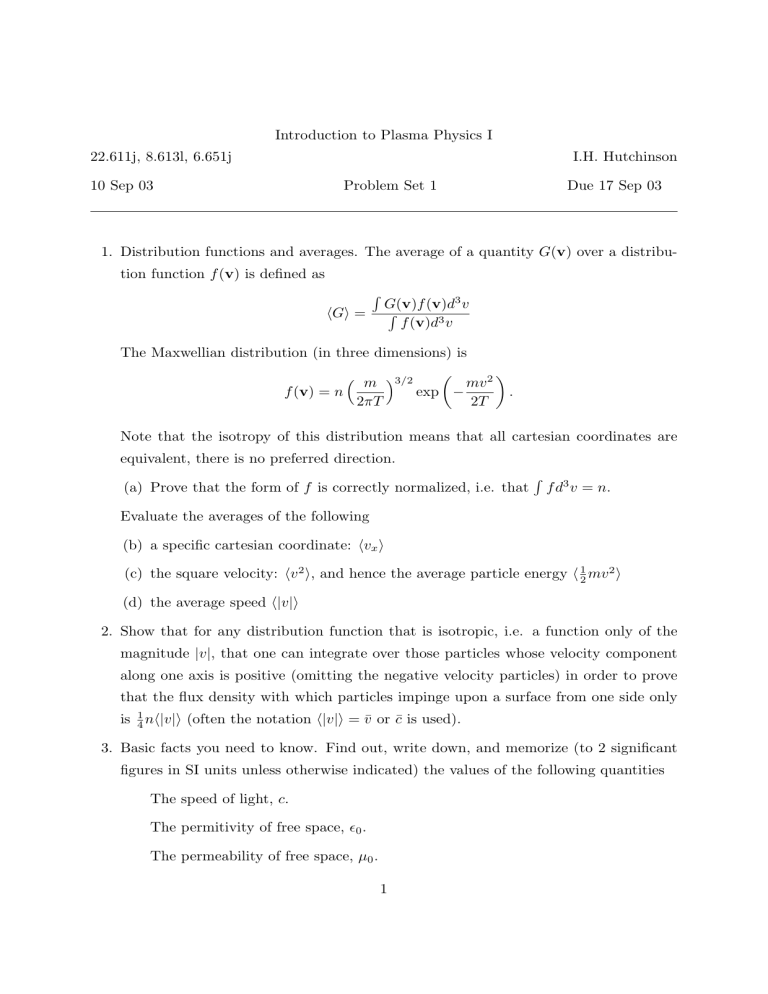
22.611j, 8.613l, 6.651j
10 Sep 03
Introduction to Plasma Physics I
Problem Set 1
I.H. Hutchinson
Due 17 Sep 03
1. Distribution functions and averages. The average of a quantity G ( v
) over a distribution function f ( v
) is defined as
G =
G ( v
) f ( v
) d
3 f ( v
) d
3 v v
The Maxwellian distribution (in three dimensions) is f ( v
) = n m
2 πT
3 / 2 exp
− mv
2
2 T
.
Note that the isotropy of this distribution means that all cartesian coordinates are equivalent, there is no preferred direction.
(a) Prove that the form of f is correctly normalized, i.e. that f d
3 v = n .
Evaluate the averages of the following
(b) a specific cartesian coordinate: v x
(c) the square velocity: v
2
, and hence the average particle energy
1
2 mv
2
(d) the average speed
| v
|
2. Show that for any distribution function that is isotropic, i.e.
a function only of the magnitude
| v |
, that one can integrate over those particles whose velocity component along one axis is positive (omitting the negative velocity particles) in order to prove that the flux density with which particles impinge upon a surface from one side only is
1
4 n
| v
|
(often the notation
| v
|
= ¯ c is used).
3. Basic facts you need to know.
Find out, write down, and memorize (to 2 significant figures in SI units unless otherwise indicated) the values of the following quantities
The speed of light, c .
The permitivity of free space, 0 .
The permeability of free space, µ 0 .
1
The value of 1 /
√
0 µ 0 .
The charge on the electron e .
The mass of the electron m e .
The mass of the proton m i .
The temperature in Kelvins, equal to 1 eV.
The particle density of the air you are breathing (m
− 3
).
The pressure of the air you are breathing in torr and Pascals.
The density of particles in water (m
− 3
).
The ionization potential of the hydrogen atom.
The relationship between magnetic units Gauss and Tesla.
The relationship between particles per cubic centimeter and per cubic meter.
4. Suppose the degree of ionization of a gas discharge is governed by the Saha equation n e n i n o
= 2
(2 πm h e
3
T )
3 / 2 exp
−
χ i
T and the Debye length is small relative to the discharge size. Calculate approximately the temperature at which the gas is 50% ionized if χ i = 13eV, and its total pressure is equal to one atmosphere. What is then the ratio of the electron density to the density of a room-temperature gas at the same pressure?
2
